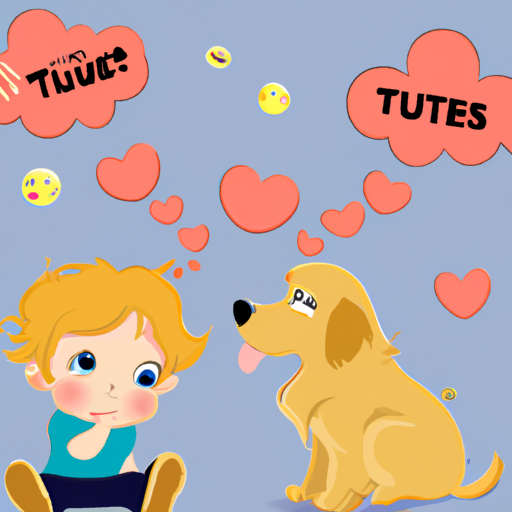You might be wondering why dogs are often seen as adorable companions. This phenomenon is rooted in our biology, psychology, and cultural practices. In this article, we’ll delve into the reasons behind our affection for these furry creatures.
The Science of Cute: Biophilia and Neoteny
Why do we find dogs cute? The answer lies in two key concepts: biophilia and neoteny.
Biophilia is the innate human tendency to connect with nature and other life forms. This theory, proposed by biologist Edward O. Wilson, suggests that we are hardwired to seek connections with nature and other forms of life. Our ancestors relied on this instinct for survival – knowing which animals were friendly and which were dangerous was a matter of life and death.
Neoteny refers to the retention of juvenile features in adults. Dogs, especially puppies, exhibit neotenic features like large eyes, a round face, and a small nose. These traits remind us of human babies, triggering our nurturing instincts.
Table: Neotenic Features in Dogs and Babies
| Neotenic Feature | In Dogs | In Human Babies |
|---|---|---|
| Large Eyes | Puppy Dog Eyes | Adorable Gaze |
| Round Face | Fluffy Fur | Soft Cheeks |
| Small Nose | Wet Nose | Button Nose |
The Psychology Behind Dog Cuteness
Let’s delve a bit deeper into our minds to understand why we find dogs cute.
- Psychological Attachment: Dogs provide us with unconditional love and companionship, fulfilling our psychological need for attachment. They are loyal, dependable, and always there for us, which makes them irresistible.
- Emotional Support: Dogs are known for their ability to provide emotional support. Their mere presence can reduce stress, anxiety, and depression.
- Social Connection: Dogs help us build social connections. They facilitate interaction with others, helping us forge new friendships and enhance our social life.
Cultural Influence on Dog Perception
Different cultures have different perspectives on dogs. However, in many societies, dogs are considered cute and lovable family members.
- In Western cultures, dogs are often seen as part of the family. Their cute and playful nature is highly valued, and they are often treated with the same care and affection as a child.
- In some Eastern cultures, dogs are viewed as loyal protectors. Their cuteness is often associated with their loyalty and protective nature.
The Role of Media and Popular Culture
Media and popular culture have a significant role in shaping our perception of dogs. Cute dogs are a staple in movies, TV shows, and social media. This constant exposure to adorable dogs strengthens our affection for them.
- Movies and TV shows often feature cute dogs as central characters, reinforcing their appeal.
- Social media platforms are flooded with cute dog photos and videos, enhancing their perceived cuteness.
FAQ
Q: Why do we find puppies cuter than adult dogs?
A: Puppies exhibit more neotenic features than adult dogs. Their big eyes, round faces, and small noses trigger our nurturing instincts, making us find them cuter.
Q: Do all cultures perceive dogs as cute?
A: Perception of cuteness can vary across cultures. However, in many societies, dogs are seen as adorable, loyal companions.
Q: How does media influence our perception of dog cuteness?
A: Media, especially movies, TV shows, and social media, often portray dogs in a cute and lovable manner, reinforcing their appeal and enhancing our perception of their cuteness.
Q: Can our psychological attachment to dogs enhance their perceived cuteness?
A: Yes, our psychological attachment to dogs can enhance their perceived cuteness. The emotional bond we form with dogs can make us find them more adorable.
Q: Why do humans have a tendency to connect with nature and other life forms?
A: This tendency, known as biophilia, is believed to be innate. Our ancestors relied on this instinct for survival, and it remains a part of our biology.



